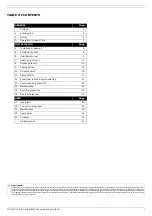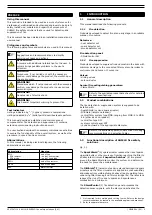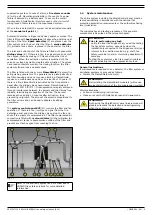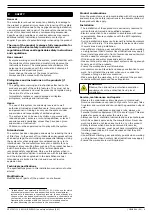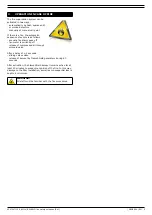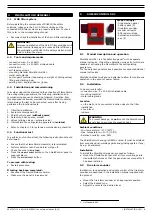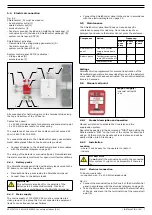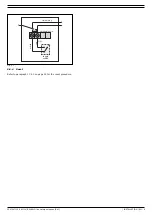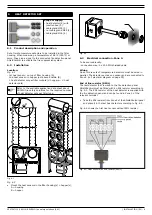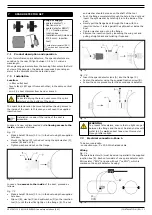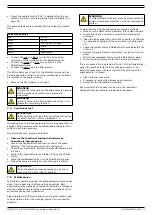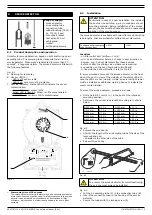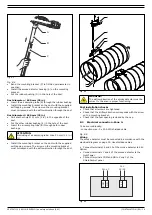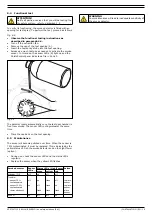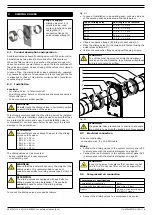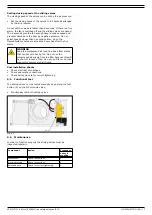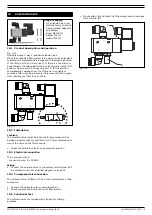
0507347110/160114/B SHIELD fire safety solutions (5k1)
| GENERAL | EN - 3
suppression system. In case of alarm, a
fire alarm sounder
(K) will go off. Operational reliability in the event of a power
failure is assured by a battery pack. To secure the overall
functionality, ShieldControl monitors open or short circuit of
wiring loops of detectors and the suppression system.
When a fire is detected, the system can be activated manually
at the
manual call point
(L).
Automatic detection is triggered by heat, sparks or smoke. The
filter is fitted with
heat detectors
(H) above the dustbin and at
the top of the filter.
Spark detectors
(C) are placed near the
filter outlet and in the duct after the filter. A
smoke detector
(D), suitable for air ducts, is placed in the duct after the filter.
The inlet and outlet duct of the filter are fitted with pneumatic
sliding valves
(B). If there is a fire, the valves close and cut off
the oxygen, thereby choking it. This constrains the risk of
escalation. When the extraction system is switched off, the
valves are closed as well to create a safe situation. The valves
have reed contacts to monitor the closing function; the filter
system software runs a periodic check.
The filter is fitted with one or more
FlameShield
(I) aerosol fire
extinguishing generators. The generators are placed directly in
the filter housing and do not require plumbing. FlameShield
requires no maintenance and has a service life of 10 years. If
there is a fire, FlameShield is activated by the fire detection
panel after the sliding valves have closed. FlameShield self
activates at 300°C (572°F). Fire suppression is rapidly achieved
through interference between the aerosol and the flames’ free
radicals, terminating propagation of the fire. The aerosol
remains active during 30 minutes after activation, thus
preventing re-ignition. The amount of aerosol is proportional to
the filter volume and can be easily adapted by adding
generators.
The
system control panel SCP
(M) controls the filter and fan
operation. If there is a fire, it will get a signal from the fire
detection panel and close the sliding valves, stop the fan and
shut off the supply of compressed air. The filter compressed air
connection is fitted with a
solenoid valve
(G) that will allow the
compressed air tanks to depressurize outside of the filter and
prevent any fresh oxygen from reaching the fire.
Fig. 1.1
1.4
System maintenance
The entire system including the ShieldControl panel must be
tested periodically in accordance with the national fire
protection association requirements or the authorities having
local jurisdiction.
The maintenance and testing procedure of the separate
components is described in the relevant chapter.
General instructions
If maintenance is required to any detector, the filter system or
peripheral equipment, proceed as follows.
•
Isolate the FlameShield module(s).
After maintenance:
•
Follow commissioning instructions.
•
Make sure switch of ShieldControl panel is in
RUN
mode.
Refer to the available application data sheet about
SHIELD fire safety solutions for more detailed
information.
A
E
F
D
H
C
B
J
G
L
K
I
M
ATTENTION!
Prior to performing any test:
- notify the local fire brigade that you will be testing
the fire safety system, especially when the
installation is connected to the brigade control room
- inform all other parties involved, e.g. staff, fire
safety coordinator, alarm monitoring department/
company
Testing the system may lead to acoustic fire alarm
without activating the fire suppression method.
WARNING!
Not isolating the FlameShield module(s) will cause
accidental activation of the fire suppression method.
WARNING!
Not having the ShieldControl panel in
RUN
mode will
disable automatic fire detection and extinguishing
when the system is in operation.


